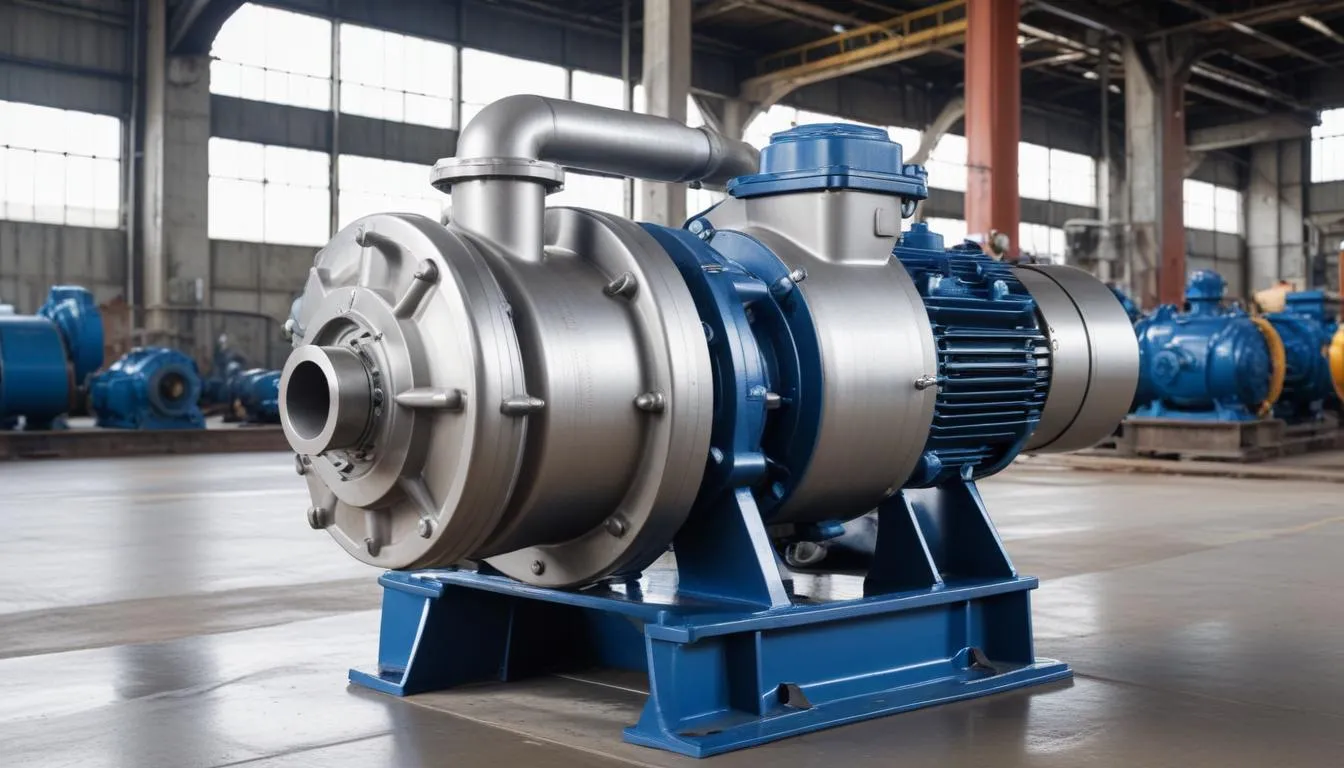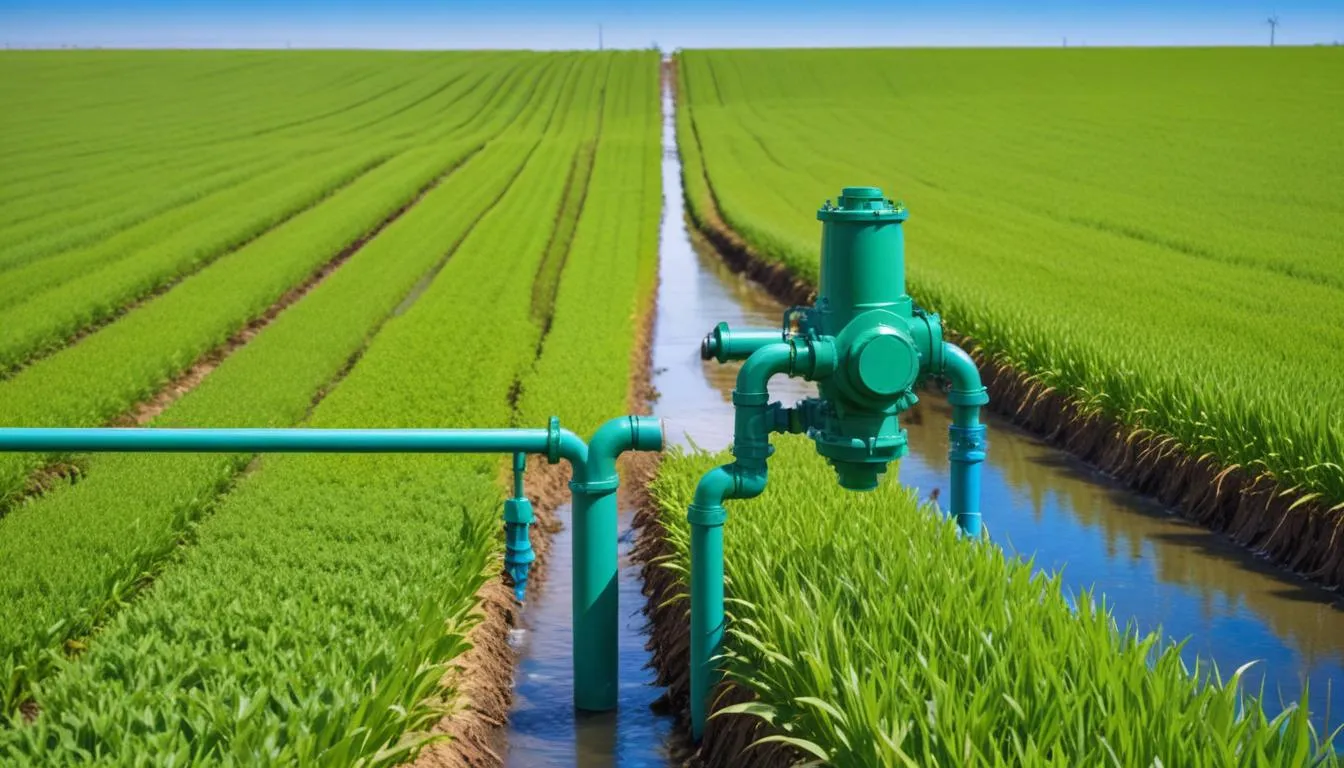 Single-stage pumps are a type of centrifugal pump designed to transport liquids through a single impeller. These pumps are engineered with a straightforward configuration that consists of a single rotating impeller and one volute casing. The design allows for efficient operation, making them suitable for a variety of applications in numerous industries.
Single-stage pumps are a type of centrifugal pump designed to transport liquids through a single impeller. These pumps are engineered with a straightforward configuration that consists of a single rotating impeller and one volute casing. The design allows for efficient operation, making them suitable for a variety of applications in numerous industries.
The primary function of a single-stage pump is to increase the pressure of the liquid, enabling it to flow through piping systems and reach designated destinations. This increase in pressure is achieved as the impeller spins, which creates a centrifugal force that propels the fluid outward into the volute casing. The volute converts the kinetic energy of the fluid into pressure energy, facilitating the movement of liquid.
Components of a single-stage pump typically include:
- Impeller: The key component that imparts energy to the liquid.
- Volute Casing: The outer casing that directs flow and converts kinetic energy to pressure.
- Motor: The driving force that rotates the impeller.
- Suction and Discharge Ports: Inlets and outlets for liquid ingress and egress, respectively.
Single-stage pumps are classified based on their construction materials, which can range from cast iron to stainless steel, depending on the liquid being pumped and the operational environment. The materials chosen also influence the pump’s resistance to corrosion, wear, and thermal variations.
Performance Characteristics of single-stage pumps include:
- Flow Rate: Defined by the pump’s design and operating speed, it reflects the volume of liquid the pump can handle within a specific timeframe.
- Head: The height to which the pump can raise the liquid, typically measured in feet or meters.
- NPSH (Net Positive Suction Head): A critical parameter that indicates the pressure required to keep the pump from cavitating.
Operating efficiency is a crucial aspect of single-stage pumps, emphasizing the importance of selecting the right pump for specific conditions to optimize performance and minimize energy consumption. These pumps are often employed in scenarios where the required pressure increase is modest, making them a practical choice for many standard duties.
Their simplicity in design allows for straightforward maintenance, making single-stage pumps an appealing option for applications ranging from agricultural irrigation to municipal water supply systems. This combination of efficacy, ease of use, and versatility highlights their vital role in fluid transport solutions across various sectors.
Advantages and Disadvantages of Single-Stage Pumps
The advantages of single-stage pumps largely stem from their straightforward design and efficiency. Firstly, their simplicity in construction means that they are typically more affordable than multi-stage pumps. This cost-effectiveness makes them an attractive choice for businesses looking to manage budgets while still ensuring reliable fluid transport.
Additionally, single-stage pumps often require less maintenance. With fewer components to inspect and replace, routine upkeep can be performed quickly and cost-effectively, saving time and resources for organizations relying on these pumps for their operations. The ease of maintenance is complemented by their robust design, which can withstand a variety of operational conditions, contributing to a longer service life.
Moreover, single-stage pumps are known for their high efficiency, particularly in applications requiring moderate flow rates and pressure increases. When operating within their designated parameters, these pumps can achieve optimal performance, leading to lower energy consumption. This efficiency not only translates to cost savings but also has a positive impact on environmental sustainability by minimizing energy waste.
On the other hand, there are certain disadvantages to consider. One major limitation of single-stage pumps is their inability to generate high heads compared to multi-stage configurations. If an application requires significant pressure increase or elevation change, a single-stage pump may not suffice, leading to potential bottlenecks in the system.
Another disadvantage is their suitability for specific types of fluids. While single-stage pumps can handle various liquids, they may not be appropriate for highly viscous fluids or those containing solids, which could cause wear and tear on the impeller and other internal components. When dealing with complex fluid characteristics, businesses might need to explore alternate pump designs that can accommodate such requirements.
In summary, the choice of a single-stage pump must be evaluated against the specific application needs by balancing the advantages of cost and simplicity against the limitations in pressure generation and fluid compatibility. Understanding these factors allows users to make informed decisions when selecting pumps that will best suit their operational demands.
Applications of Single-Stage Pumps
 Single-stage pumps find a wide range of applications across various industries due to their efficiency, simplicity, and ease of maintenance. They are particularly well-suited for tasks that require moderate flow rates and modest pressure increases. Here are some key areas where single-stage pumps are commonly utilized:
Single-stage pumps find a wide range of applications across various industries due to their efficiency, simplicity, and ease of maintenance. They are particularly well-suited for tasks that require moderate flow rates and modest pressure increases. Here are some key areas where single-stage pumps are commonly utilized:
- Agricultural Applications:
- Irrigation systems are a prime example, as single-stage pumps efficiently move water from a source to fields.
- Fertigation systems, which combine fertilization and irrigation, also benefit from these pumps for their continuous flow and moderate pressure requirements.
- Livestock watering systems rely on the pumps to deliver fresh water efficiently.
- Municipal Water Supply:
- Single-stage pumps are integral to providing clean water for urban and rural areas, ensuring consistent water pressure and flow.
- They are often used in booster pump stations to maintain adequate water supply across various elevations and distances.
- Industrial Applications:
- Manufacturing processes often use single-stage pumps to circulate coolants, lubricants, and other fluids.
- Single-stage pumps are suitable for washing equipment and manufacturing lines where efficiency and reliability are required.
- Heating and Cooling Systems:
- In HVAC systems, these pumps are utilized to circulate water through heating and cooling coils, providing temperature control to buildings.
- Single-stage pumps are also employed in geothermal heating systems to move fluids between the ground and heat pumps.
- Fire Protection Systems:
- Many fire suppression systems make use of single-stage pumps for water supplies, providing the necessary pressure to extinguish flames quickly and effectively.
- These pumps are often part of fire hydrant systems to ensure reliable access to water during emergencies.
- Slurry and Wastewater Management:
- Single-stage pumps can handle certain wastewater applications, moving effluent to treatment plants efficiently.
- In some light-duty slurry applications, these pumps are used to transport mixtures of water and solid materials.
Additionally, the suitability of single-stage pumps for specific tasks can lead to customized solutions tailored to meet the unique demands of various processes. For instance, modifications such as selecting appropriate materials for corrosive fluids or employing specialized impeller designs can enhance their performance in specific applications.
Overall, the versatility of single-stage pumps enables them to serve multiple sectors effectively, making them a cornerstone of fluid transfer solutions in both industrial and commercial settings.